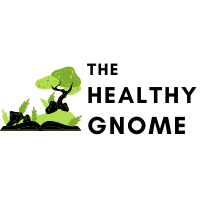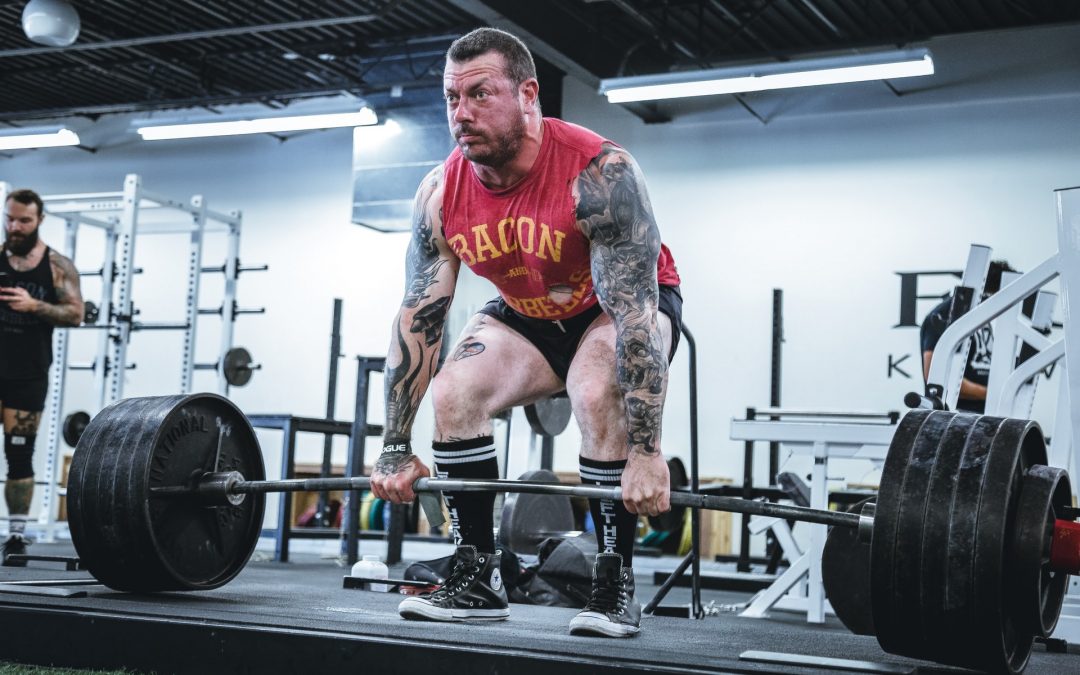Walk into any gym, and you’ll notice people doing bicep curls, bench press, bent-over rows and a few people doing squats. However, leg exercises often come at the bottom of the list in a gym goer’s routine. A 2017 study found that fitness enthusiasts skip leg day because legs are the least visible body part.
The best leg workouts for strength and power are compound exercises that hit multiple leg muscles with each repetition.
If you’re focusing only on leg presses or extensions to build your legs, it’s time to change up your routine and transition to compound strength workouts that hit multiple muscles at once.
We’re going to outline multiple types of leg workouts that you can perform with dumbbells, kettlebells, barbells, resistance bands and body weight. Of course, we recommend changing up your routine and exercises often to keep your body guessing.
7 Best Leg Workouts for Strength
When you perform any strength workout, you want to lift at 70% to 90% of your one-rep maximum and perform 3 – 5 sets of 5 – 8 repetitions depending on the weight used. If you’re using 90% of your maximum, stick to a 5 x 5 routine.
Note: These workouts are not in any particular order. Each of these exercises has its strong points and a place in any routine.
1. Box or Bench Squats
Squats are a foundational exercise, much like a bench press or row. When you perform squats as a beginner, be sure to use a squat rack for added safety. Some people go ass to grass, but we’re going to recommend a chair or bench squat.
You’ll be performing the same type of squat with the added safety of being able to sit if you can’t extend back into the starting position.
And you can use the box as a benchmark for how far to go down. Once your butt is touching the bench or box, stand back up and repeat. Squats are one of the leg workouts for strength and mass that you really need to practice to maintain good form.
Key Muscle Focus
- Quadriceps
- Hip flexors
- Glutes
- Core
Hints to Maintain Proper Form
A few hints to maintain proper form are to begin with light weights first and stop if you feel knee pain. Air squats are an excellent way to practice form before moving into heavy squats. Muscle recovery will also be important, so be sure to maintain rest periods of 1 to 2 minutes between sets.
Squats are one of those everyday movements that will help you build strong, massive legs.
Video Showing How to Perform a Box Squat Properly
2. Side Lunges
Side, or lateral, lunges are a great way to work your largest muscles, focusing on the quads and thigh muscles. As one of your universal exercises, there are many variations that you can incorporate into your routine.
Lunge variations can help you work different muscles, so be sure to experiment with light weight to master your form before diving into other types of lunges.
Key Muscle Focus
- Quads
- Glutes
- Core muscles
- Hamstrings
- Adductors
Hints to Maintain Proper Form
Maintaining proper form is key to lowering your risk of injury, but you should follow a few additional tips. Be sure to keep your knee in front at a 90° angle, keep the foot in the back straight, and don’t lean your chest too far forward.
Also, don’t try side lunges with heavy weight until you master your form.
Use light weight or bodyweight when first attempting this exercise to better understand how it’s performed.
Video Showing How to Perform a Lateral Lunge Properly
3. Dumbbell Step-Ups
Step-ups are a great exercise if you have dumbbells and a stair to step up on or a platform. Of course, you can do this exercise in the gym, but it’s also one of the best home workouts for leg strength. While the step-up works multiple lower body muscles, it has a primary focus on your quads.
Want to add focus on your hamstring muscles?
Step all the way up on the step and go down the other side just as you would if you were walking down the stairs. The hamstrings are an important muscle because they help you build stronger knees, too.
Note: This is a great exercise if you have one leg that is significantly stronger than the other and you want to try strengthening your weak leg. Targeting weaker muscles will help improve your performance in the long-term and reduce the risk of injury.
In terms of muscle activation, let’s see which major muscles are activated:
Key Muscle Focus
- Quadriceps
- Hamstrings
- Glutes
- Hips (slightly)
Hints to Maintain Proper Form
Step-ups are great leg workouts for strength and functionality, but you need to perform them correctly. Step up with your right leg, press up, ensure that the weight is in the heel down through the toes, and straighten your leg.
Bring the left leg to your right leg and bend the right knee to bring the left foot back down.
Finally, bring your right foot back to the ground and repeat on the opposing foot.
When done correctly, this is a simple exercise that you can do with barbells, dumbbells and kettlebells.
Video Showing How to Perform a Dumbbell Step-Up Properly
4. Bulgarian Split Squat
Considered one of the best leg workouts period, Bulgarian split squats can also be dangerous. You need to be very careful when performing Bulgarian split squats because poor form increases injury risks drastically. In fact, if you’re a beginner, it may be best for you to reach a higher fitness ability level before adding these types of squats into your training session.
Key Muscle Focus
- Calves
- Hamstrings
- Glutes
- Quads
- Core
- Hips
Hints to Maintain Proper Form
If you want your target muscles to be your quads, move your leg closer to the platform. Want to focus on your glutes? Place your front foot further away from the platform. You’ll also put a major emphasis on your hamstrings with your foot further from the platform.
Be sure that your rear knee is bent but not in pain and keep the front foot flat.
Video Showing How to Perform a Bulgarian Squat Properly
5. Back Squat
Perhaps one of the greatest leg exercises in the world, the back squat is one exercise that you must have in your training routine. I recommend using a Smith machine first or placing a bench behind you when first performing back squats for added safety.
Once you master this ultimate leg workout, you can add squat variations to focus on different muscles.
Key Muscle Focus
- Quads
- Glutes
- Hip flexors
- Core
Hints to Maintain Proper Form
I’ve added a great video below that covers form basics, but a few tips are to keep your back straight, contract glutes and keep your abs tight. Also, since this is a compound movement, you can perform heavier lifts to put more strain on your muscle fibers.
Also, you can go ass to grass, but start by going down into a 90 degree angle. Range of motion is essential with squats, so feel free to tape your session and review your form to ensure that you’re doing your squats properly.
Also, be sure to never lock the knees.
Video Showing How to Perform a Back Squat Properly
6. Deadlifts
Did you think that we wouldn’t mention a traditional deadlift? Deadlifts are one of the foundational exercises that has a lot of variations, too. When you perform deadlifts, it’s important to make sure that you watch videos on form because you can really hurt your back with improper form.
Key Muscle Focus
- Back
- Core
- Glutes
- Hamstrings
- Hips
Hints to Maintain Proper Form
Again, deadlifts can cause pain and hurt your back, so you’ll want to really focus on your form. A few tips to follow are to keep the barbell, dumbbell or kettlebell close to your body. If using a barbell, you’ll want the bar to touch your shins going on the way up.
Avoid overextending your back and keep your back straight.
Ensure that you’re not performing a squat to lift the weight – many people forget this. Actually, watch Jim’s video below to master deadlifts.
Video Showing How to Perform a Deadlift Properly
7. Seated Hamstring Curls
Hamstrings often don’t get enough love, and people tend to perform exercises for their hamstring improperly. Therefore, you want to avoid heavier weight until you know how much weight you can perform with each rep.
As an isolation exercise, it’s really easy to perform this workout with minimal risk of injury in the process.
Key Muscle Focus
- Hamstrings
Hints to Maintain Proper Form
You can’t mess up a seated hamstring curl too much, but you can still compensate for weak muscles by overcompensating. A few pointers for success are avoiding locking out your knees, avoiding arching your back, and don’t put your head too far forward.
Video Showing How to Perform a Hamstring Curl Properly
Honorable Mention: Leg Workouts for Mass and Strength That Didn’t Make the List
There are a lot of workouts for leg strength that didn’t make our list. A few of the additional exercises you may want to incorporate into your leg day workout routine are:
- Box Jump
- Calf Raises
- Front Squats
- Hack Squats
- Sumo Squat
- Goblet Squat
- Goodmornings
- Hex Bar Deadlift
- Hip Bridges
- Leg Extensions
- Leg Press
- Reverse Lunge
- Romanian Deadlifts
- Single Leg Deadlifts
- Stiff Leg Deadlift
- Walking Lunges
Over time, you’ll want to focus on leg workouts for strength and endurance (read our post on creating an endurance workout plan). Switch up your routine, adding in speed, endurance, power and functionality training, too.
When you do compound leg exercises, you’ll be building a strong:
- Core
- Hips
- Glutes
- Quads
- Stabilization muscles
Even if you’re young and fit now, the leg workouts for size and strength you do today can help you immensely as you get older. You may have an easier time getting off the couch, remaining ambulatory and reduce your risk of falling when you’re older.
Note: If you’re injured or have pain when performing these exercises, try modifying them or stop performing them. Always focus on form rather than heavy weight and try Smith Machine squats if you feel unstable with traditional squats, and do the same with other movements.

